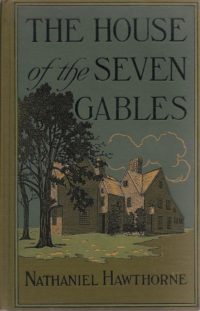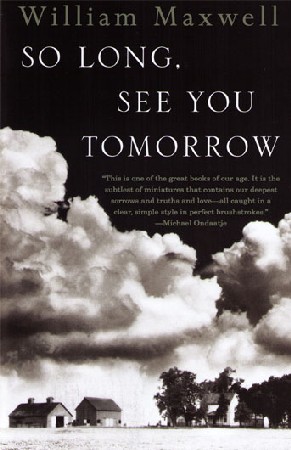House of the Seven Gables
 We’ve had some cheerful reading around here lately: Hawthorne’s The Scarlet Letter, mentioned in our history textbook. I’ve been reading it aloud to the girls at lunchtime, trying to model how to go about engaging with a not-necessarily-accessible “classic” book. For some reason even I don’t understand, I decided this was not enough dark, spiritually probing Hawthorne, and in my spare time I reread The House of the Seven Gables.
We’ve had some cheerful reading around here lately: Hawthorne’s The Scarlet Letter, mentioned in our history textbook. I’ve been reading it aloud to the girls at lunchtime, trying to model how to go about engaging with a not-necessarily-accessible “classic” book. For some reason even I don’t understand, I decided this was not enough dark, spiritually probing Hawthorne, and in my spare time I reread The House of the Seven Gables.
These experiences challenge me to think about what it means to “like” a book or an author. For me, it seems, “liking” a book doesn’t entail pure entertainment; it can involve some intellectual work. Hawthorne’s sentences alone require a certain discipline to hold the first part of the sentence in mind during the long meander to the end, and the antiquated vocabulary and turns of phrase force the reader to slow down. This was particularly striking to me, since after reading a chapter of The Scarlet Letter, I also read aloud a chapter of the book of Acts. The Bible was much easier reading! — more simple sentences, more directly constructed, than Hawthorne’s.
The subject matter too requires work. There is the leap into the past with its different social values and level of development. In Seven Gables, we begin with Hepzibah Pyncheon’s personally devastating effort to start a cent shop in the ancestral mansion in order to avoid the poorhouse, an act that plunges her from the elevated status of “lady” into the ranks of the working class. She has a boarder, Mr. Holgrave, whose progressive politics and scientific interests in mesmerism and daguerrotyping make him a representative of the forward-looking class whose concerns are now distantly removed from us. We’re left musing over what form he might take, and what interests he might have, if he lived today. Instead of mesmerism, maybe he would be waxing eloquent on stem cell research; rather than early photographic work, he might be creating virtual reality software.
Hawthorne’s interest in the psychology of fallen humanity makes for a dark fictional journey in this book. We see the fruit of family sins like greed and the lust for control. The house itself, with its dark, cobwebbed corners and decayed structure, its overgrown garden, and its centrally located portrait of the original Pyncheon sternly dominating the atmosphere, serves as a mind symbol of a family desperately in need of light from without. Like a Shakespearian comedy or a good Jane Austen novel, the conflicts are resolved through a marriage that restores order and frees the family from both poverty and depression as they move to a new dwelling.
Why do I find the book satisfying? Why do the girls seem so interested in The Scarlet Letter? I confess that I’m not sure what the appeal is. This is not escape fiction or entertainment, yet there is enough engagement of real human questions and difficulties to transcend the challenges that go along with the reading. A friend of mine confessed recently that she had never been able to finish The House of the Seven Gables, and another called The Scarlet Letter dull, so I can’t say that Hawthorne is universally loved. I have had enough for now myself. But there is something intriguing and substantive that Hawthorne draws us towards as we read, and because of that the stories will remain in my thoughts and remind me of how easily we can become trapped in the stale air of ancestral patterns or personal perceptions.


One Comment
hopeinbrazil
Lovely review. I have to admit I knew NOTHING about House of Seven Gables and I think I have it on my shelves somewhere. Merry Christmas to you and yours.